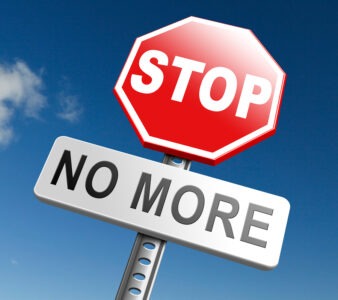Can You Ever Have Too Many Open Trades?
When multiple set-ups are presented in succession, how do you choose which trades to ultimately take, and how many is too many open trades?

When multiple set-ups are presented in succession, how do you choose which trades to ultimately take, and how many is too many open trades?

So using recent market action as a guide, here's how to remain calm and calculating when the markets present multiple opportunities within a common window, as we've just seen with EURNOK, USDJPY, GBPCHF, AUDUSD, and four other pairs. Follow these guidelines to capitalize on high-quality trading opportunities without becoming overexposed to risk in the process.
The firm's main research and development office is based in Tel Aviv Israel. It originally specialized in Forex and indices spreadbetting and CFDs but has recently expanded in stock trading also. At the time of writing, eToro has 2.2 out of 5 star on Trust pilot. The comments suggest that the platform offers some impressive features but withdrawing money can be difficult. Having said that, some of the negative reviews appear to be rants rather than constructive criticism. This can be examples of traders losing money through their own recklessness rather than eToro's fault. You should therefore take this reviews with a pinch of salt. OANDA is a global financial services company providing advanced currency solutions to both retail and corporate clients all over the world. In this article, we are going to review this broker’s trading options, tools, platforms, spreads, commissions, security measures, and educational resources to help traders make the right choice. AvaTrade offers a wide variety of trading solutions (spread trading, CFDs, and social trading), and peace of mind with its comprehensive regulation, covering the EU, Australia, Canada and South Africa. Clients can use a variety of platforms for discretionary and automated trading.![]() Best Award Winning Brokers
Best Award Winning Brokers
 Many traders might wonder if there's even any such thing as having too many open trades. Besides, doesn't your trading strategy require you to take qualifying set-ups whenever one (or more) is presented in a market or asset you trade? That logic, though—as true as it is—may cause overtrading and excessive exposure to risk at times like the present, when the four pairs noted above, and others including NZDUSD, CADJPY, GBPJPY, and EURGBP all showed viable opportunities to buy or sell established price patterns at/near established technical support or resistance on the charts.
Many traders might wonder if there's even any such thing as having too many open trades. Besides, doesn't your trading strategy require you to take qualifying set-ups whenever one (or more) is presented in a market or asset you trade? That logic, though—as true as it is—may cause overtrading and excessive exposure to risk at times like the present, when the four pairs noted above, and others including NZDUSD, CADJPY, GBPJPY, and EURGBP all showed viable opportunities to buy or sell established price patterns at/near established technical support or resistance on the charts.
To trade them all would simply be improper, and would leave you with what I'd deem far too many open trades. Here's why:
These conditions are used to help establish the rule that you would trade no more than three set-ups at one time even if additional, qualifying ones were available. This, of course, excludes any trades that are already running and in progress from the prior weeks.
 Think of it this way: If ever a bevy of trade set-ups is presented to you at one time, focus not on the ones you'll miss, but instead on the confidence you'll have when executing only the two or three that look and feel the "best" to you. It's a nice luxury to have, and something that doesn't come around all that often. So when it does, consider these factors and isolate the strongest set-ups to trade:
Think of it this way: If ever a bevy of trade set-ups is presented to you at one time, focus not on the ones you'll miss, but instead on the confidence you'll have when executing only the two or three that look and feel the "best" to you. It's a nice luxury to have, and something that doesn't come around all that often. So when it does, consider these factors and isolate the strongest set-ups to trade:
Whenever multiple set-ups are presented involving the same currency, or any that are closely correlated, choose only one to trade. You don't want the risk that comes with having double or triple exposure to say, USD, JPY, or commodities, which is why you'll choose only one dollar- or yen-based pair to trade, and avoid trading multiple commodity dollars (CAD, AUD, NZD) at one time. Consider this an initial line of defence that will help you narrow down your choices in the interest of never having too many open trades at one time.
Consider also the technical analysis strength of the set-up when isolating the best trade possibilities. Sure, assets or currency pairs that are testing, say, moving average support or resistance, are fine to trade, but if you also have a pair that's testing an all-time high or low, or multi-year support or resistance, well, you'd be wise to trade the latter instead.
Naturally, trend trades are going to carry a higher probability than reversal trades, so when you have the luxury of choosing from multiple set-ups, perhaps look to secure a mix of both in order to keep probabilities on your side. Conversely, whenever multiple opportunities are presented at one time, you might want to avoid choosing only reversal trades. Pick one reversal set-up you like the best, then complement it with one or two trend trades to help balance out the odds of overall success.
Yet another way to "filter" trade possibilities is using reward/risk profile. If ever you have several to choose from, you'll likely also have one or more that offer 2:1, and perhaps some that offer even more, like 3:1 or 4:1. Taking viable set-ups that offer the most exemplary reward/risk profile is a great way to select two or three from a broader selection of trade possibilities, enabling you to prudently capitalise without having too many open trades.

